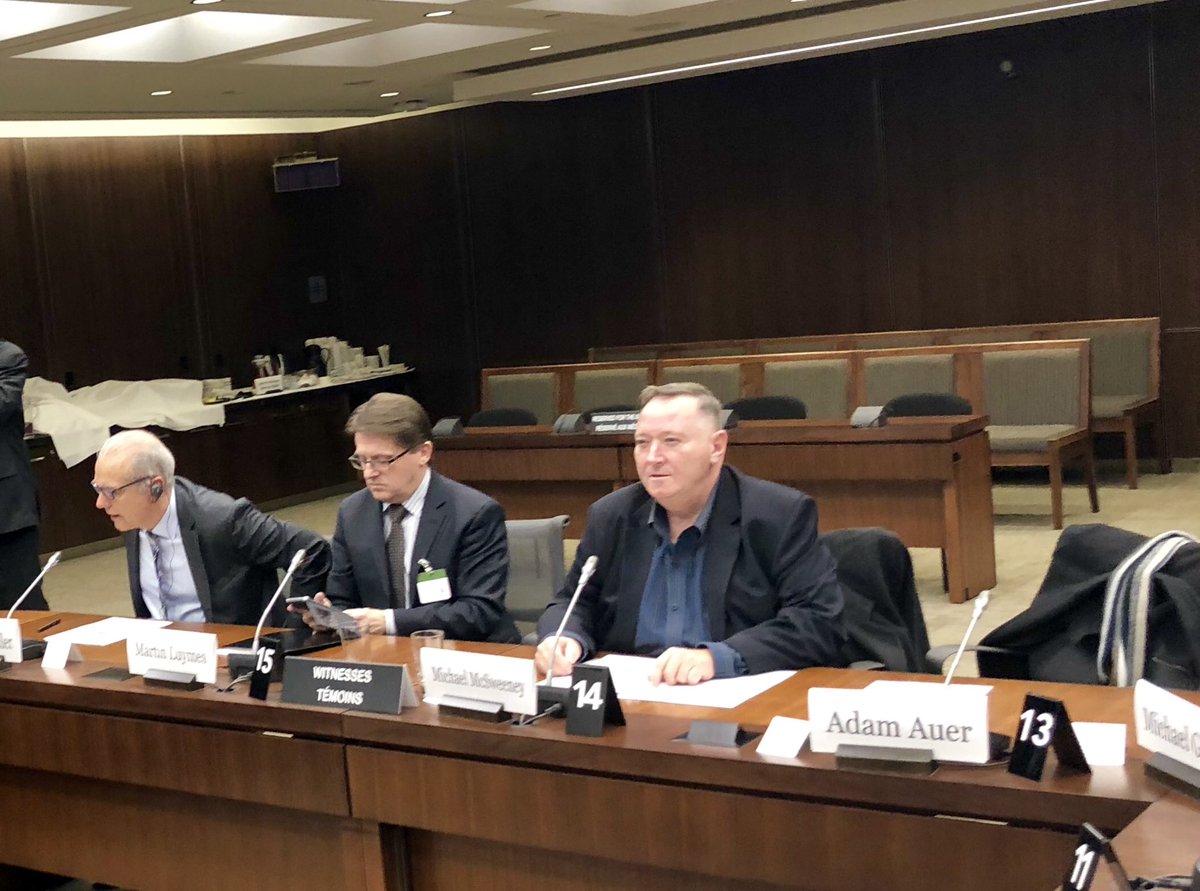Governments must promote transformative innovations for a low carbon, climate resilient future


Ottawa, Ontario, February 13, 2018 “Procurement decisions made by governments in general emphasize lowest cost tenders and only rarely consider GHGs or even climate adaptation,” noted Michael McSweeney, President and CEO of the Cement Association of Canada speaking before the Canadian House of Commons Standing Committee on Environment and Sustainable Development.
“When governments have considered climate change in the built environment, they have done so with prescriptive policies – for example, policies like “wood first” – rather than leveraging the market toward comprehensive and systemic Clean Growth innovation,” he added.
McSsweeney offered as an example recent efforts by the CAC to promote a new cement, Portland Limestone cement, as an opportunity to reduce GHGs from concrete. PLC reduces the GHG footprint of concrete by 10%.
“If adopted as a full replacement for all cement sold in Canada, Contempra could yield annual CO2 reductions of almost one megatonne, at no additional cost,: he stated., adding .hat “While PLC meets the same performance standards as general-use cement, has been used in Europe for decades and is recognized in the 2010 National Building Code of Canada, it does not enjoy deep market adoption. This is because the construction industry, codes and standards bodies and the public procurement agencies responsible for planning and commissioning infrastructure projects do not yet value or incentivize new innovations in low-carbon construction materials and design.”
Citing a study reference on a Pacific Northwest Building Resilience Coalition report on carbon sequestration in wood-based building products, McSweeney said “Research on the GHG impacts of commercial logging suggests its effect on the carbon profile of wood products is significant. A Bureau of Land Management Report in Western Oregon proposes that when the land use change GHG impacts of deforestation are taken into account (even accounting for regrowth), some 13 tonnes of GHGs are lost to the atmosphere for every tonne sequestered in a wood product. This is a far cry from the carbon neutrality claimed by the wood industry and Federal and Provincial Natural Resource Ministries.”
Canada’s Clean Growth strategy for the built environment must look to the future it wants – a low carbon, climate resilient future – and make space for the transformative innovations needed to get there. Michael McSweeney, President and CEO of the Cement Association of Canada
McSweeney summarized his comments noting that “Let me be clear, we are not asking that governments mandate concrete roads or buildings. Nor are we disparaging competition from other building materials. We are simply asking government to take a sector-neutral approach to planning and using tools that focus on reducing GHGs as we transition to a low-carbon and climate-resilient economy.”
He also urged that the Government of Canada mandate the use of full lifecycle and environmental assessments for all federally funded infrastructure projects at all three levels of government.
A complete copy of Michael McSweeney’s comments are available here.
Recent Posts
Future of Modular Construction Using Concrete and Masonry
These factors collectively position modular construction as a key player in shaping the future landscape…
The Future of Cement as a Sustainable and Resilient Building Product
The future of cement shaping up to forge a more sustainable construction industry that meets…
The Growing Importance of Resiliency in the Design and Construction of Buildings
Resiliency is becoming increasingly important in building design and construction due to the rising frequency…
GCCA Global Low Carbon Ratings for Cement and Concrete
The Global Cement and Concrete Association (GCCA) has developed a standardised low carbon rating system…
Building for Resiliency with Insulated Concrete Forms
Building with Insulated Concrete Forms (ICFs) is increasingly recognized as a critical component of modern…
Building Resiliency in the Pacific Northwest
In the Pacific Northwest, the increasing frequency and severity of climate-related disasters, such as wildfires,…


